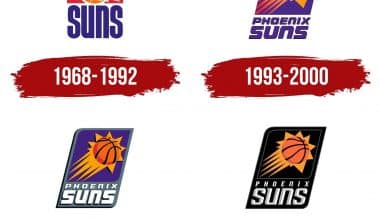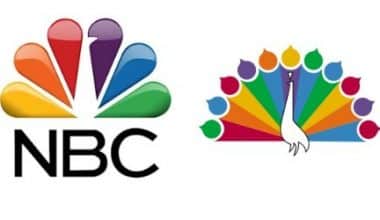The Real Madrid logo is reminisced by its title and invincibility, which makes it unique. The logo shows that Madrid is loyal to its history, its royal status, and the club’s importance over time. Let’s take a tour of the history and meaning of the Real Madrid logo, with a glimpse at the players the club has had over time.
History and Meaning of The Real Madrid Logo
Some believe that the renowned crown on the Real Madrid logo represents his sporting success. Of course, the team’s reputation is determined by its triumphant victories. This is because it established itself as a football superpower in the 1950s. And the ensuing uproar is encoded in the club’s DNA, manifested in a simple and confident logo. However, since its inception at the turn of the twentieth century, Real Madrid’s corporate identity has been heavily impacted by political forces.
The Real Madrid inaugural logo was a simple combination of the club’s initials: blue M, C, and F letters on a white backdrop. It should be mentioned that the team frequently performed while wearing the city emblem. This was required by the regulations of most football contests at the turn of the century. It is incorrect to attribute the city’s coat of arms to Madrid’s history, despite the fact that the laws for staging formal contests at the time required the club to use the city’s emblem.
When Did Real Madrid Change Its Logo?
Real Madrid changed its logo in 1908. As a result, the city’s coat of arms inspired the contemporary club’s emblem. First (in 1908), the club’s letters were imprinted on a shield derived from the city. Thus, giving rise to the Galacticos logo’s blue circles.
On June 29, 1920, Spanish King Alfonso XIII bestowed the royal title “Real” on Madrid. This was reflected in the club’s logo by a crown resembling the municipal coat of arms. In official matches, the squad continued to use the stylized municipal logo.
The overthrow of King Alfonso XIII heralded the beginning of the Second Spanish Republic. From 1931 until 1939, the team was renamed “Madrid,” and the crown was removed from the logo due to the prohibition on using symbols of monarchical items. At the same time, the Real Madrid logo received a purple stripe to represent the area of Castile, in which contemporary Madrid is located.
The end of the civil war and the restoration of General Francisco Franco’s dictatorship restored Madrid’s royal status and the crown for the Galacticos logo. In addition, the Real Madrid insignia was revised and ultimately became vibrant, with golden tones. The Real Madrid logo was maintained with the Castilian strip.
The Evolution
The Real Madrid logo has been in this shape for more than five decades, with just minor alterations at the turn of the century. The Madrid coat of arms was finalized at the turn of the century. Before beginning construction on “Galaktikos,” club executives in Madrid maximized the letter M. They also changed the color of the strip from purple to blue.
Madrid has perfected the logo, which has got a modern style, according to the club’s status as the best club of the twentieth century.
1902 – 1908
Madrid Football Club was created on March 6, 1902, by a group of like-minded football players. Football Sky, which was founded in 1896, is thought to be its forefather. The new sports organization’s original logo was a dark blue monogram. The artists combined the initial letters from the Spanish team name Madrid Club de Futbol: “M,” “C,” and “F.” They were originally intertwined: inside the large “C” was a medium-sized “M,” merging with the “F.” The knit appeared chaotic because the designers did not consider form and proportion harmony.
In addition to the monogram, the Madrid City Hall coat of arms was utilized, as required by the time’s football competitions. However, because it was shared by all local clubs, the city sign was not included in the official history of Real Madrid emblems.
1908 – 1920
The first revisions to the Madrid FC corporate brand occurred in 1908. The team’s initials have been maintained but have taken on a new shape. The letter “M” has been substantially expanded and rounded, while “C” has been made smaller and placed in the center, between the side legs of “M.” The smallest letter, “F,” has been positioned to intersect with the bottom edge of “C.”
According to the round blue border in which the monogram was placed, the city coat of arms was the logo’s forefather. According to what is known, the letters of the football team were first overlaid on a rectangular shield with a rounded base and dark blue edge. The designers then modified their shape to a circular one.
1920 – 1931
The second form of the logo was in use until 1920 when Pedro Parages became president. The enormous blue and white monarchical crown initially appeared in the drawing at this point. Because the football team acquired official approval from Alfonso XIII, the club changed its name to Real Madrid. The word “Real” translates as “Royal,” emphasizing the relationship with the crowned person. As before, the city’s coat of arms was used in select matches.
1931 – 1941
The emblem makers removed the crown after the collapse of King Alfonso XIII and the entire Spanish monarchy since the post-revolutionary government prohibited such symbols. They did it by leaving a blue ring, centering the lettering, and inserting a wide purple stripe inside the circle. The diagonal line represented Castile, which is where contemporary Madrid is located.
1941 – 1997
When the civil war ended in 1941, the club restored the crown to the emblem. The artisans painted her in gold with blue, red, and white diamonds. The ring and letters are likewise made of gold. The Castilian stripe has been retained; it has been slightly unwound and dyed purple.
1997 – 2001
The sole difference between the 1997 and previous versions is the color palette. Gold faded to yellow, bright red faded to pale, and purple faded to dark blue.
2001 – present
In 2001, the final form of the Real Madrid logo was unveiled. It has a larger “M,” a narrower and shorter diagonal stripe, and a crown that is raised slightly above the ring. The background color is yellow, and all items are outlined in dark blue.
Font and Color Of The Real Madrid Logo
The present brand name is congruent with Real Madrid’s standing as the best club of the twentieth century and is used to market the club as a brand. It incorporates all of the team’s symbols from the last century. The latter includes the crown received with the light hand of Alfonso XIII, the initials “MCF,” originating from the inaugural name “Madrid Club de Futbol,” and the Castilian stripe.
When designing the logo, the designers ignored existing fonts and relied only on their imagination to make the monogram distinctive. The letter “C” appears standard, the letter “F” has reduced horizontal strokes, and the letter “M” is visibly rounded. Red (# EE324E), blue (# 00529F), and yellow (# FEBE10) are included in the palette.
Why Does The Real Madrid Logo Have A Crown?
Los Blancos officials did not want to add an R since they loved the insignia as it was, with the letters sitting perfectly. Instead, they added a crown to commemorate the awarding of the royal title.
Did Real Madrid Remove Cross From Its Logo?
Real Madrid removed the Christian cross from its emblem in 2014 after its sponsor, the National Bank of Abu Dhabi, did so.
Overview of the Real Madrid Football Club
On March 6, 1902, a group of like-minded footballers formally established the Madrid Football Club, which was preceded by another team Football Sky at the turn of the nineteenth and twentieth centuries.
Real Madrid is one of the few soccer teams that has never been relegated from the Liga de Futbol Profesional’s highest division, the Primera Division. This is the best football club of the twentieth century, according to the Federation Internationale de Football Association. It holds the UEFA Champions League record and has won numerous competitions in Spain and other nations.
Real Madrid Club de Ftbol, or simply Real Madrid, is a professional football club headquartered in Madrid, Spain.
Since its establishment in 1902 as Madrid Football Team, the club has usually worn a white home kit. The honorary title “Real”, which translates to “royal,” was given to the club by King Alfonso XIII in 1920, along with the royal crown in the insignia. Since 1947, Real Madrid has played their home matches at the 81,044-seat Santiago Bernabéu Stadium in central Madrid. Unlike most European athletic organizations, Real Madrid’s members (socios) have owned and operated the club since its inception.
Real Madrid is one of the most popular teams in the world. The club is expected to be worth $5.1 billion in 2023. Thus, making it the most valuable football team in the world. With annual revenue of €640.7 million in 2021, it was the world’s second-highest-earning football club.
Rivalries
Real Madrid has many long-standing rivalries, most notably El Clásico with Barcelona and El Derbi Madrileo with Atlético Madrid, as one of the three founding members of La Liga that have never been relegated from the top division since its inception in 1929 (along with Athletic Bilbao and Barcelona). During the 1950s and 1960s, the club established itself as a dominant force in both Spanish and European football, winning five consecutive and six overall European Cups and reaching two further finals. This success was paralleled at home, with Madrid winning twelve league crowns in a 16-year stretch. Some consider this team, which includes Alfredo Di Stéfano, Ferenc Puskás, Francisco Gento, and Raymond Kopa, to be the best of all time.
Achievements
The club owns 68 domestic trophies. These include a La Liga record of 35 titles; 19 Copa del Reys, 12 Supercopa de Espaa, a Copa Eva Duarte, and a Copa de la Liga. Real Madrid have won a record 21 trophies in European football. They include a record 14 European Cup/UEFA Champions League championships, two UEFA Cups, and five UEFA Super Cups. They have won a record seven club world titles in international events.
Real Madrid was named the FIFA Club of the Century on December 11, 2000, with 42.35% of the vote, and was awarded the FIFA Centennial Order of Merit on May 20, 2004. On May 11, 2010, the IFFHS awarded the club the Best European Club of the 20th Century. In June 2017, Madrid became the first club in Champions League history to win consecutive titles. They won a record-extending fourteenth European Cup in May 2022, giving them five trophies in the previous nine seasons. Real Madrid is rated fourth in the UEFA club rankings as of May 2022, trailing Bayern Munich, Manchester City, and Liverpool.
Why Is Real Madrid Called Real?
The title Real means “royal” in Spanish, and it was conferred on the club by King Alfonso XIII in 1920, along with the royal crown in the logo. Since 1947, the team has played its home games at the Santiago Bernabéu Stadium in downtown Madrid.
Real Madrid News
Benzema’s first Ballon d’Or is a ‘dream come true.’
Karim Benzema of Real Madrid has won the prestigious Ballon d’Or trophy for the first time in his career, beating out Robert Lewandowski, Sadio Mane, and Kevin De Bruyne.
Benzema was instrumental in Real Madrid’s Champions League victory last season. He is the first French player to win the cup since Zinedine Zidane in 1998.
At 34, Benzema also became the oldest recipient since Stanley Matthews in 1956.
Benzema had a fantastic season with Real, scoring 44 goals in 46 games across all competitions to help them win the LaLiga and Champions League double. Real Madrid won their 14th Champions League title thanks to his 15 goals in the competition.
Real staged incredible comebacks from losing positions in the last-16, quarter-finals, and semi-finals against PSG, Chelsea, and Manchester City, with Benzema scoring in each of the second legs.
The highlight of their European season was a 3-1 win over PSG in the second leg after the Spanish club had fallen behind 2-0 on aggregate, with Benzema scoring a 17-minute hat-trick in the second half to startle the Ligue 1 side.
Benzema took over for Lionel Messi, who won the Ballon d’Or for the sixth time last year but was not nominated this time after his debut season at PSG.
The medal has been granted to men for 66 years by France Football magazine. Because of the COVID-19 epidemic, both the men’s and women’s trophies were canceled in 2020.
For the first time this year, the Ballon d’Or was awarded based on previous season achievements. It was previously given based on performance over the course of a calendar year.
Top Real Madrid Players
Here is a list of the players Real Madrid has had over time. Some of them have since left the club, but their achievements still speak volumes.
#1. Christiano Ronaldo
No one has ever played at their physical peak as frequently as Cristiano Ronaldo. No one has ever possessed his combination of physicality, speed, touch, and movement. And no one has ever scored more goals. For Real Madrid, or for anyone.
By the time he’d exited the Bernabeu, CR7 had 450 in fewer games than that. Every season he was at Real, he scored over 30 goals a season: twice, he reached over 60. He was a machine, not a man. He gradually gained a reputation for single-handedly carrying this team to glory, regardless of how brilliantly they played.
#2. Di Stefano, Alfredo
A man from Buenos Aires was responsible for making Madrid “Real.” ‘The Golden Arrow’ was a footballer who managed to steer an entire institution.
Alfredo Stefano, too, was a consummate footballer: powerful, slim, and skilled, with stamina few had seen in his age. He had an incredible vision as well, though he preferred the spotlight to be directed at his daring runs: he played 11 seasons for the Merengues, scoring over 300 goals in just under 400 games. Di Stefano scored in each of the first five European Cup finals.
Di Stefano, the undisputed superstar of eight league titles and five European triumphs, represents the splendor and mysticism that have come to be associated with the club. It’s not just because of him that so many other celebrities rushed to Madrid in the 1950s; it’s also because of him that they still do now.
#3. Zidane, Zinedine
Zinedine Zidane’s record as the most expensive footballer on the planet had stood for eight years. When he swiveled and walloped home Roberto Carlos’ cross in the 2002 Champions League final, he made every euro count.
Zizou is the Galactico: a player of grace and delicacy who can unleash true fiery power with the flick of a switch. To youngsters growing up in the 2000s, he was a myth of a man. He had the ability to transform football matches on his own, and despite his time at Real Madrid is one of tactical instability, he shone like few others in that beautiful white shirt.
The fact that he returned to manage the Threepeat side further added to his popularity among Merengues. He is, nevertheless, one of the most talented human beings to ever touch a football, and he embodies everything that Real Madrid stands for as a football club.
#4. Sergio Ramos
Sergio Ramos was born to be Real Madrid’s captain. The center-back was brash, brazen, and brilliant in equal measure, commanding the Merengues’ defense first from right-back before moving into the center and coming to define the position in the eyes of fans.
Ramos was not only an exceptional defender with pace, physicality, aggression, and aerial prowess, but he also scored goals. He finished his Real Madrid career with 101 goals in all competitions, several of them penalties, and embodied the never-say-die attitude that was established in the Champions League-winning teams of the 2010s.
He left with 22 trophy wins to his name, having played nearly 700 games in white. For some, he is the ultimate Real hero: flawed, yes, but always with his heart on one of his rolled-up sleeves.
#5. Iker Casillas
Iker Casillas set the standard for goalkeeping in Spanish football for 25 years. He joined Real Madrid at the age of nine. Since then, he has been a beacon of consistency and composure between the sticks for club and country in 725 games for the club.
San Iker was also a showman, capable of producing saves that looked stunning on TV while not allowing his fellow Galacticos to dominate the spotlight. He was the youngest goalie to play in a Champions League final. He still holds the record for most Champions League clean sheets (he won the title three times), and went on to play 1,000 professional games. Not bad for someone who wasn’t the tallest.
His exit from the Bernabeu was devastating and unfit for one of Real’s greatest players. But in the aftermath, tributes from rivals revealed just how important a role he’d been for Los Blancos. He is regarded as one of the greatest keepers of all time.
#6. Paco Gento
Some consider him the greatest left-winger of all time. It’s a no-brainer if we’re talking about awards.
Paco Gento won six European Cups with Real Madrid. His speed and skill were crucial in making Los Blancos the formidable threat they were at the time. For his bustling approach, the Spaniard was dubbed the “Storm of the Cantabrian,” and he seldom changed gears in 18 years at Real. He played in the first five European Cup wins for the club in 600 games before captaining the “Ye-Ye” team to the title in 1966.
#7. Raul
Raul was the link between the 1980s’ talent-producing Real and the 2000s’ home for superstars. He was both at the same time, despite the fact that his first coach, Jorge Valdano, saw him as technically restricted.
What Raul lacked in innate talent, he more than made up for in sheer bravado. He scored even when Real Madrid was struggling in the league, and he left the Bernabeu with six titles and three Champions Leagues to his name. David Beckham and Cristiano Ronaldo arrived, but neither could remove the number 7 shirt from him. Raul was always regarded as the King of Madrid.
8. Santiago Bernabeu
He is most known as a president (and, er, a stadium),. However, Real Madrid would look considerably different today if Santiago Bernabeu had not been a player.
Bernabeu joined the club at the age of 14. He quickly rose through the ranks, eventually becoming the club’s senior captain. He scored 68 goals in 79 official appearances, leading from the front with physical strength and the kind of leadership he’d subsequently provide to the team off the field.
Better, more skilled players would follow, of course, and Bernabeu’s goal record and commitment could certainly argue for him to be near the top of any list, but there has perhaps never been a more significant player in the club’s history.
#9. Ferenc Puskas
‘The Galloping Major’ had already had one career before arriving in Spain: a career in which he scored 358 goals in 350 games for Budapest Honved and sparkled as a member of the Magnificent Magyars.
Ferenc Puskas, on the other hand, remade himself at Real Madrid. He still had his velvet touch, his ability to confuse defenders, and his tremendous set-piece talent. However, but he was glad to supply alongside his new superstar teammates as well. He won three European Cups, including a hat trick in a final Los Blancos lost. He also scored four hat tricks in his debut season.
#10. Luis Figo
Real Madrid was about to become Europe’s most star-studded football team since the 1950s, and they didn’t care whose toes they stepped on.
Luis Figo joined from Barcelona in the most contentious move in history. But he was well worth the eye-watering £40 million or more—and all the fuss. It wasn’t simply his extraordinary ability to beat a man, lay on the perfect assist, or locate space where none existed: he never hid. He was a true leader who strove to lead his new teammates, and they adored him for it. He won two league crowns and the Champions League during his five years in Madrid.
#11. Luka Modric
Luka Modric, who has been questioned throughout his career, has contributed to shifting perceptions of not only himself but also other players. He’s a diminutive midfielder who employs ball-carrying as much as passing to avoid pressure. He’s not only been a creative spark in four Champions League titles, but also a crucial figure when the chips are down. His Ballon d’Or was proof of the absolute elegance of what he could achieve with a ball.
#12. Raymond Kopa
Raymond Kopa was a Ballon d’Or winner, a three-time European champion, and the first football player in France to be awarded the Legion d’honneur. His speed, balance, and playmaking ability would have made him a success in any era of the game, and despite only appearing 101 times for Real Madrid, he left an everlasting impression on the club. In every meaning of the term, he was one of the first true Galacticos.
#13. Karim Benzema
Karim Benzema has been everything to everyone: the deep-lying, unselfish foil for Cristiano Ronaldo and Gareth Bale before becoming the prolific leader leading Real Madrid without CR7. As an all-around forward, perhaps no one has been better in the last decade, with the Frenchman possessing incredible touch and control for a player of his size. He is a club legend and the frontman for four European titles.
#14. Hugo Sanchez
Hugo Sanchez’s record of 208 goals in 282 matches in just seven years is just incredible. However, they only tell half of the story of how clever he was. The Mexican was the ideal converter for the ‘Quinta del Buitre,’ being brutal, cold, and always in the right place at the right time. He was the leading scorer in LaLiga four times and won nine trophies with Real Madrid.
#15. Pirri
Pirri played in defense, midfield, upfront, and even with his arm in a sling in the 1971 Cup Winner’s Cup final. There was just no stopping him. Pirri scored double digits in five of the ten league titles he earned with Los Blancos, his determination and aggression a must-have component for the Merengues for over a decade. He is one of just two players to have received the Laureate honor from President Santiago Bernabeu.
#16. Ricardo Zamora
The goalkeeping trophy named after ‘The Divine One,’ Ricardo Zamora, is still given to the goalkeeper with the most clean sheets in a LaLiga season. The Spaniard is still recognized as one of his country’s most important footballers of all time, and he was in goal when Los Blancos won the 1931/32 title without losing a single game. He would have won the Zamora Trophy three times if it had existed during his playing career.
#17. Roberto Carlos
Roberto Carlos stretched the boundaries of what everyone imagined a full-back could do. In attack, the World Cup winner was a cyclone, capable of whipping crosses like missiles or, more famously, long-range free kicks that swerved, floated, and smashed. But arguably his most underappreciated quality was his dependability. Carlos was more than simply a dazzling Galactico, and he was European champion three times.
#18. Emilio Butragueno
Although Barcelona is more connected with culture, Emilio Butragueno was a great artist. When ‘the Vulture’ took flight, the ball simply adhered to his feet, and he was the Galactico to watch for the next 13 years. Butragueno played nearly 450 games for Real Madrid, earning six titles and two UEFA Cups, but it’s his moments of brilliance and amazing goals that fans remember today
#19. Ivan Zamorano
Some remember Ivan Zamorano for having a “+” between his 18 squad number digits at Inter Milan. For everyone in Spain, however, he’s nothing more than a defense tormentor.
Zamorano was a pocket rocket, capable of defeating defenders for pace, headers, and just his determination to get a toe to everything. He was best exemplified by a 5-0 thrashing in the Clasico, in which the Chilean got a hat-trick and set up the other two. In four seasons, he scored over 100 goals.
#20. Vicente Del Bosque
As a coach, he had a natural sense of team balance. As a player, he was a mustachioed midfielder who learned the value of organization. Vicente Del Bosque, a true team player, was Real Madrid’s right back for 11 seasons. Thus, knitting together the midfield and forward line in perfect unison. Coaches admired him for his selflessness and intelligence, while fans admired him for his tenacity and will to win.
What Does El Clasico Stand For?
El Clasico refers to football matches between two of Spain’s most famous and fierce rivals: FC Barcelona and Real Madrid C.F.
Why Is El Clasico Famous?
It is regarded as one of the most important club football games in the world. It is also one of the most-watched annual athletic events.
What is the significance of the Real Madrid crest to fans?
The Real Madrid crest holds a great deal of significance for fans of the club. It represents the team’s rich history, success, and commitment to excellence. The crest is often displayed on clothing, merchandise, and flags, allowing fans to show their support and connection to the team.
What is Real Madrid’s brand identity?
Real Madrid’s brand identity is built around its rich history, success, and commitment to excellence. The club is known for its star-studded roster, passionate fans, and thrilling play, and these elements all contribute to its overall brand identity.
What sets Real Madrid apart from other football clubs?
Real Madrid sets itself apart from other football clubs in several ways, including its record of success, star-studded roster, passionate fan base, and commitment to excellence. The club is one of the most successful and recognizable teams in the world, and its brand is known for representing the pinnacle of the sport.
How has Real Madrid impacted the football world?
Real Madrid has had a major impact on the football world, both on and off the field. The club’s success and reputation as a global brand have helped to raise the profile of Spanish football, and its players and coaches have made lasting contributions to the sport. Additionally, Real Madrid’s approach to player development and recruitment has had a major influence on the way other clubs approach these areas.
How does Real Madrid use the logo to communicate its values and messages to fans?
Real Madrid uses its logo to communicate its values and messages to fans by associating the crest with its rich history, success, and commitment to excellence. The logo is often used on merchandise and other materials, allowing fans to show their support for the club and connect with its brand.
How does Real Madrid approach its player development and recruitment?
Real Madrid approaches player development and recruitment with a focus on finding talented players who fit the club’s style of play and values. The club scouts and signs players from around the world, and also invests in its youth academy to develop young talent. Additionally, Real Madrid provides training and support to help players reach their full potential on and off the field.
In Conclusion,
Real Madrid, the Royal football club, is one of those whose visual identity hasn’t changed much in over a century. One of the most famous football symbols in the world is based entirely on the logo designed in the 1900s. Thus, demonstrating the club’s appreciation for its history and traditions.
Related Articles
- ROLEX LOGO: Meaning, and the Whole Story About the Famous Crown on the Logo
- NIGHTCLUB BUSINESS: How To Successfully Run Your Own Nightclub
- MOVING COMPANIES: Top Best Companies In 2023(Update)
- NFL Pension: The 2023 Ultimate Guide (Updated)
- Canadian Whiskey Bands: Best Top 25+ Canadian Whiskey Brands.
- WALGREENS LOGO: Founders and History Timeline






